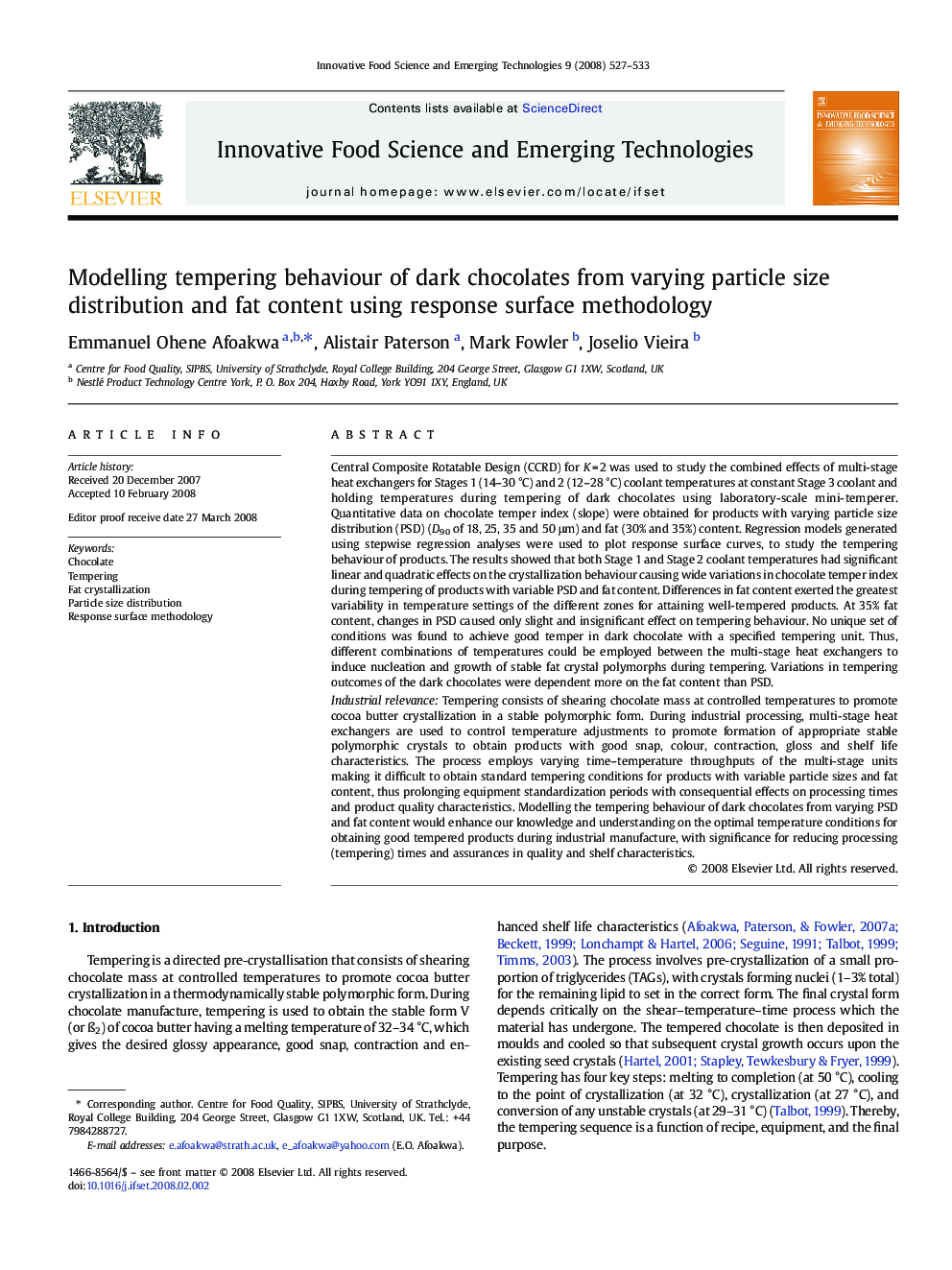| Article ID | Journal | Published Year | Pages | File Type |
|---|---|---|---|---|
| 2087350 | Innovative Food Science & Emerging Technologies | 2008 | 7 Pages |
Central Composite Rotatable Design (CCRD) for K = 2 was used to study the combined effects of multi-stage heat exchangers for Stages 1 (14–30 °C) and 2 (12–28 °C) coolant temperatures at constant Stage 3 coolant and holding temperatures during tempering of dark chocolates using laboratory-scale mini-temperer. Quantitative data on chocolate temper index (slope) were obtained for products with varying particle size distribution (PSD) (D90 of 18, 25, 35 and 50 μm) and fat (30% and 35%) content. Regression models generated using stepwise regression analyses were used to plot response surface curves, to study the tempering behaviour of products. The results showed that both Stage 1 and Stage 2 coolant temperatures had significant linear and quadratic effects on the crystallization behaviour causing wide variations in chocolate temper index during tempering of products with variable PSD and fat content. Differences in fat content exerted the greatest variability in temperature settings of the different zones for attaining well-tempered products. At 35% fat content, changes in PSD caused only slight and insignificant effect on tempering behaviour. No unique set of conditions was found to achieve good temper in dark chocolate with a specified tempering unit. Thus, different combinations of temperatures could be employed between the multi-stage heat exchangers to induce nucleation and growth of stable fat crystal polymorphs during tempering. Variations in tempering outcomes of the dark chocolates were dependent more on the fat content than PSD.Industrial relevanceTempering consists of shearing chocolate mass at controlled temperatures to promote cocoa butter crystallization in a stable polymorphic form. During industrial processing, multi-stage heat exchangers are used to control temperature adjustments to promote formation of appropriate stable polymorphic crystals to obtain products with good snap, colour, contraction, gloss and shelf life characteristics. The process employs varying time–temperature throughputs of the multi-stage units making it difficult to obtain standard tempering conditions for products with variable particle sizes and fat content, thus prolonging equipment standardization periods with consequential effects on processing times and product quality characteristics. Modelling the tempering behaviour of dark chocolates from varying PSD and fat content would enhance our knowledge and understanding on the optimal temperature conditions for obtaining good tempered products during industrial manufacture, with significance for reducing processing (tempering) times and assurances in quality and shelf characteristics.
